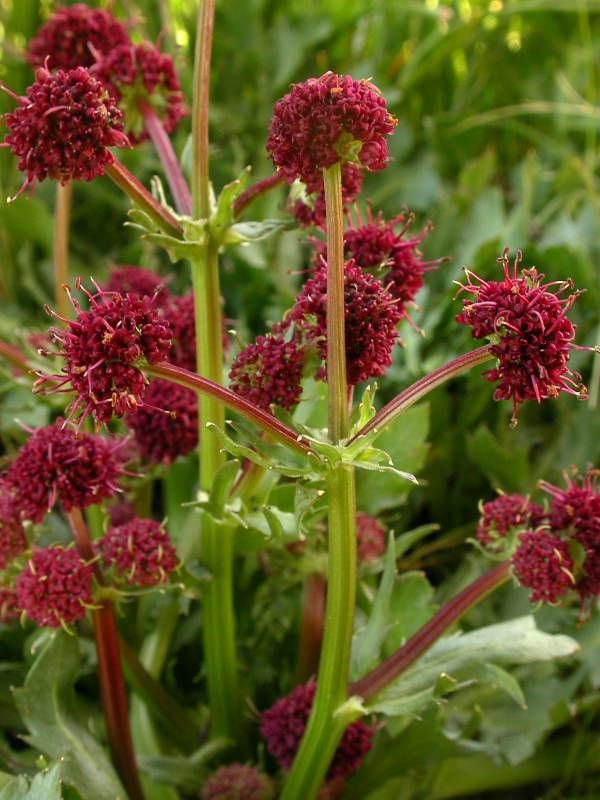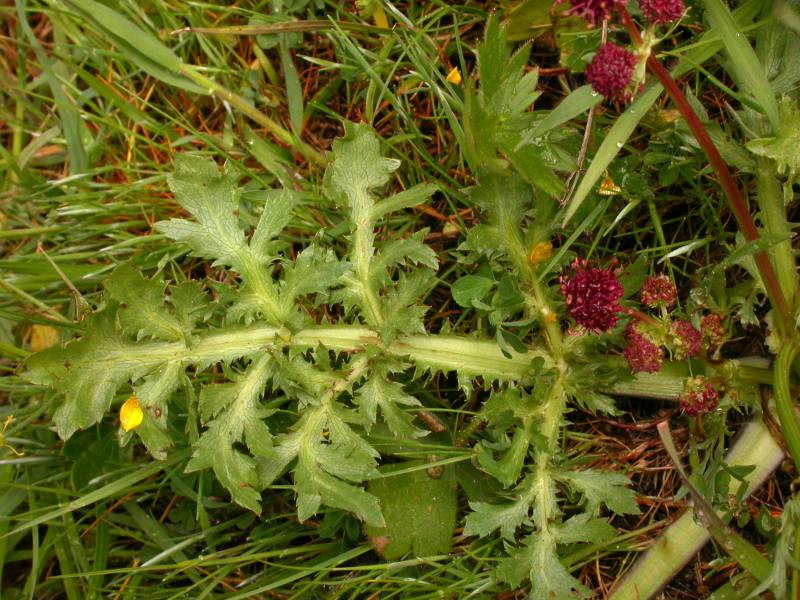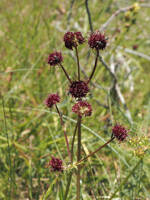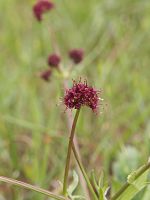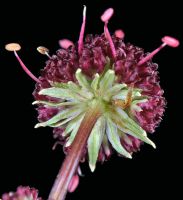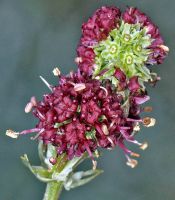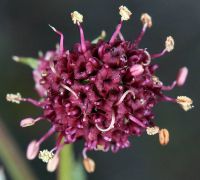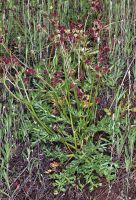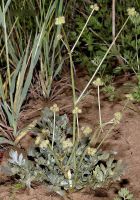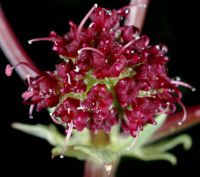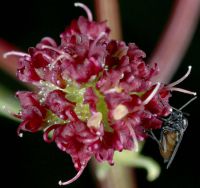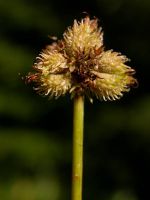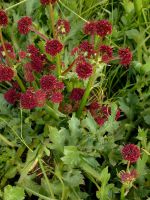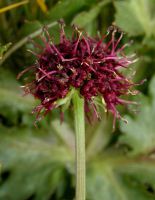Distribution: Occurring chiefly west of the Cascades crest in Washington; British Columbia to California.
Habitat: Balds, forest edge, and other open to partially shaded areas at low to moderate elevations.
Flowers: May-June
Origin: Native
Growth Duration: Perennial
Conservation Status: Not of concern
Pollination: Bees, flies, moths
Taprooted perennial, the solitary or few branching stems 1-6 dm. tall.
Leaves mostly basal, long-petiolate, the blade 4-13 cm. long and 3-12 cm. wide, pinnatifid or bipinnatifid, with a winged, toothed rachis, the segments also toothed; cauline leaves few and reduced, becoming sessile.
Primary umbels few-rayed and irregular, ultimate umbels with about 20 flowers and head-like; involucre of leafy bracts; involucel of lanceolate bractlets less than 4 mm. long; calyx lobes soft, lance-ovate, 1 mm. long; flowers brownish-red to purple.
Fruit ovoid to sub-globose, 3-6 mm. long and 2-4 mm. wide, covered with stout, recurved prickles.
Publication: Fl. Bor.-Amer. (Hooker) 1(5): 258. 1832.
PNW Herbaria: Specimen records of Sanicula bipinnatifida in the Consortium of Pacific Northwest Herbaria database.
WA Flora Checklist: Sanicula bipinnatifida checklist entry.
OregonFlora: Sanicula bipinnatifida information.
E-Flora BC: Sanicula bipinnatifida atlas page.
CalPhotos: Sanicula bipinnatifida photos.
USDA Plants: Sanicula bipinnatifida information.

